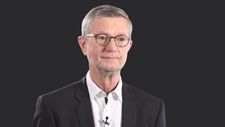
Guido Baranowski
In the early 1980s there was the big steel crisis, the third mining crisis. Within a few years, a total of 80,000 industrial jobs were lost. Hoesch Stahl AG, who were big at the time, halved their workforce from 32,000 to 16,000 within months. And we had to search for new ideas, because the steel sector was on the decline not just in Dortmund, but in the entire Ruhr area, so we turned to science for impetus. The university, founded in 1968, was a catalyst for new jobs also with respect to keeping well-educated young people in the area. Structural change takes brains, so for that you need to keep brains around and thus you need something you can offer to these young people. And we exploited that opportunity through start-ups. Since 1985, following two years of planning and construction, we have been systematically developing this site to reach the present outcome of 330 businesses with over 15,000 employees. We had lost them at first, but that was a starting point: to keep young people in the region. Because we know that most of the young people who study in the universities and colleges of the Ruhr come from around here. And if they can find employment here, then they’ll stay. But that wasn’t the case in the late 80s and into the mid-90s. Many left, and not all of them came back. That meant we had to ensure job offers for these highly educated young people. And what we started was also an education campaign, in a sense. It’s not enough to get your Abitur (A-levels), go off and study somewhere and stay there. Rather, we have to create a variety of job opportunities for young people. They’ll manage the structural change, they’ll shape the future. And there are a few places here and there where we certainly still need to make adjustments.